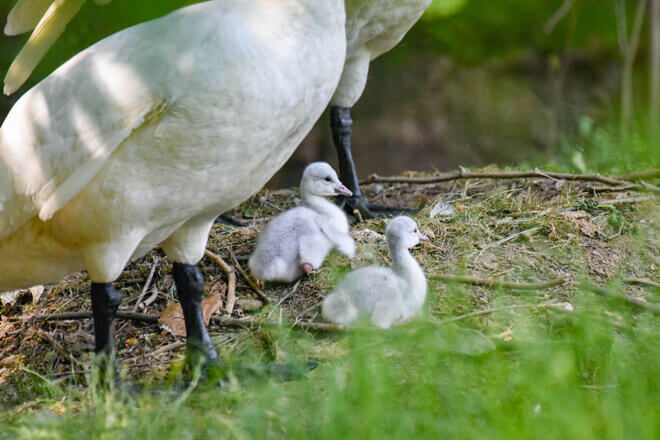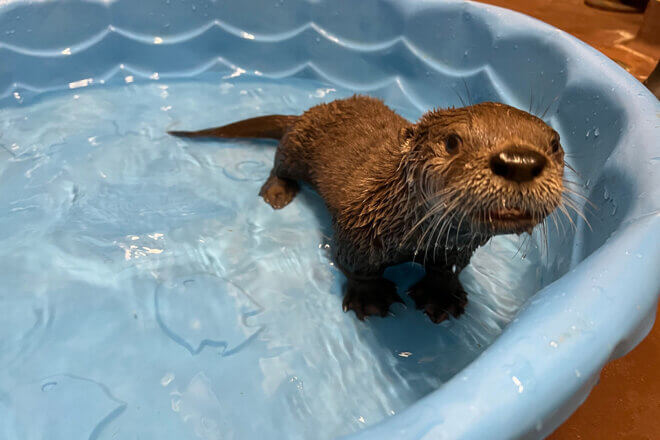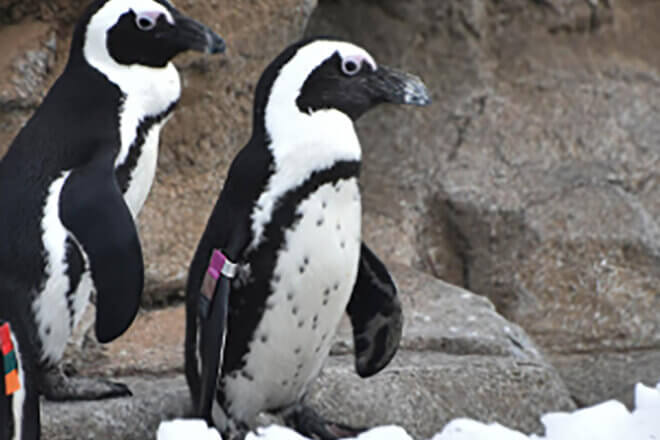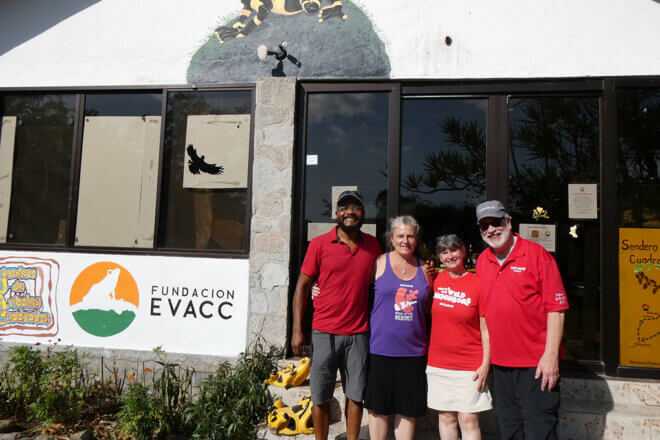BALTIMORE, MD – The Maryland Zoo is excited to announce the hatching of two trumpeter swans (Cygnus buccinator). The hatchlings, called cygnets, emerged after more than 30 days of incubation in their huge nest located in the Farmyard at the Zoo.
“This is the eighth clutch laid by our trumpeter swans. Over the past decade our swan parents, Scuttle and Buttercup, have played a very important role in the conservation of their species,” said Jen Kottyan, Curator of Birds at Maryland Zoo.
“Last year the cygnets went to Oregon where they were released into the wild as part of a trumpeter swan restoration program by the state’s Department of Natural Resources,” Kottyan said. “This year one will be released in Oregon and the other will join a breeding population as part of the Association of Zoos and Aquariums’ Trumpeter Swan Species Survival Plan.”
Until they are large enough, the cygnets will be raised by their parents who help them develop skills to survive in the wild.
“Since the cygnets are part of a reintroduction program we are always very hands off to keep them from imprinting with humans,” said Kottyan. “That gives them the best odds for survival in the wild once they are released.”
Trumpeter swans are the largest waterfowl species native to North America and the largest swan in the world. They can weigh up to 30 pounds, and are known for their bright white feathers, black beaks, very large webbed feet and a six-foot wingspan. In the early 1900s, trumpeter swans were nearly hunted to extinction for their skin, feathers, meat and eggs. The passage of the Migratory Bird Treaty Act of 1918 gave protection to trumpeter swans and other birds which helped curb illegal killing, however the population continued to decline and in 1932 it was believed that there were fewer than 70 trumpeter swans remaining. In 1935, the U.S. government established Red Rock Lakes National Wildlife Refuge (NWR) in Montana’s Centennial Valley to protect the remaining trumpeters.
Visitors may see the swans in the lake in the Zoo’s Farmyard or – new this year – can watch them on a live nest cam.






Share this article